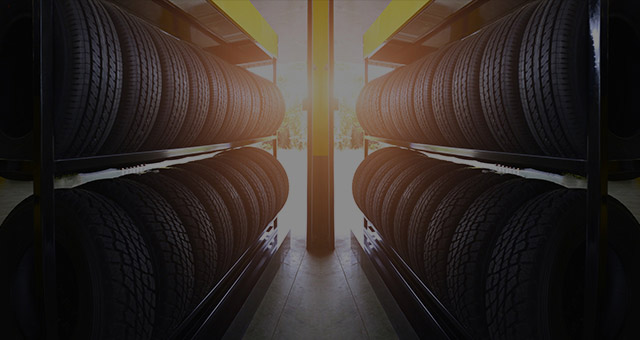Trust Morris Tire and Alignment for Expert Service and Treatment
Trust Morris Tire and Alignment for Expert Service and Treatment
Blog Article
Tire Service: Comprehending Tire Stress Surveillance Solutions
Recognizing Tire Pressure Tracking Solutions (TPMS) is a vital aspect of preserving optimum vehicle performance and safety when driving. With advancements in auto modern technology, TPMS has actually become a typical function in modern lorries, offering real-time information on tire pressure levels. Digging much deeper into the complexities of TPMS, one can uncover the different elements that make up this system and the importance of each in making certain accurate monitoring. From direct to indirect TPMS systems, the landscape of tire stress tracking is diverse, each with its one-of-a-kind collection of advantages and factors to consider. Keep tuned to untangle the intricacies of TPMS, from maintenance pointers to the undeniable advantages of maintaining your tires properly blew up. mopar tire service specials.

Significance of TPMS
The relevance of Tire Stress Monitoring Equipments (TPMS) hinges on their ability to boost lorry safety and efficiency via real-time surveillance of tire pressure levels. Maintaining the right tire pressure is essential for making sure ideal handling, braking, and general safety and security of a lorry. TPMS offers chauffeurs with instant feedback on any kind of overinflated or underinflated tires, enabling timely adjustments to be made.
Components of TPMS
Consisting of different necessary elements, a Tire Pressure Surveillance System (TPMS) operates as a sophisticated safety attribute in modern-day vehicles. The primary components of a TPMS consist of sensors, a control component, and a caution sign. Sensing units are normally located in the tire valve stem or affixed to the wheel setting up, where they determine tire pressure and transmit information to the control module. If it spots substantially reduced pressure in any of the tires, the control component processes this information and activates a caution. The warning indication, usually a symbol on the dashboard, signals the vehicle driver to inspect the affected tire or tires. Some progressed TPMS models additionally display the real tire stress analyses for every tire, supplying motorists with real-time info to make sure ideal tire performance and safety and security. By monitoring tire stress continually, TPMS assists stop mishaps, lowers tire wear, and boosts gas efficiency, making it an essential component for lorry safety and security and efficiency.
Kinds Of TPMS

On the other hand, indirect TPMS relies upon the car's wheel rate sensing units to check tire stress. This system discovers underinflation by contrasting the rotational rates of the wheels. Indirect TPMS is less costly than straight TPMS, as it makes use of existing sensing units within the lorry.
While direct TPMS provides more accurate readings, indirect TPMS is easier in style and normally requires much less maintenance. Both systems have their constraints and benefits, and the selection in between them usually relies on aspects such as price, automobile make, and individual preference. Comprehending the differences in between these two kinds pop over to this web-site of TPMS can help car proprietors make notified choices regarding tire upkeep and safety.
TPMS Upkeep Tips
Efficient upkeep of TPMS is crucial for making sure optimum performance and safety of your vehicle. Regularly examining the TPMS sensors for any type of damage or corrosion is crucial. Ensure that the sensors are free and tidy from particles that might disrupt their functioning. In addition, it is a good idea to inspect the sensor batteries regularly and replace them as visit their website required to assure exact analyses. Conduct regular examine the tire stress degrees and compare them with the TPMS readings to ensure they are consistent. Alter the system following the supplier's guidelines if there are any kind of discrepancies. During tire turning or replacement, make sure that the TPMS elements are dealt with meticulously to prevent any possible damages. Finally, if the TPMS advising light illuminates on the control panel, resolve the concern without delay by checking the tire stress and the overall system for any kind of mistakes. By sticking to these maintenance ideas, you can extend the lifespan of your TPMS and boost the safety of your driving experience.
Advantages of Appropriate Tire Stress
Maintaining correct tire pressure, as stressed in TPMS Maintenance Tips, is critical for enjoying the countless benefits associated with optimum tire stress levels. Furthermore, correct tire pressure ensures also tire wear, prolonging the lifespan of the tires and promoting more secure driving problems. In verdict, the advantages of appropriate tire stress go past simply tire Click This Link durability; they include enhanced gas efficiency, enhanced safety, far better automobile efficiency, and overall driving comfort.
Verdict
To conclude, understanding tire stress tracking systems (TPMS) is essential for maintaining ideal tire stress and making certain automobile safety. By identifying the value of TPMS, knowing with its parts, knowing the various types offered, sticking to correct upkeep tips, and recognizing the benefits of preserving appropriate tire pressure, motorists can improve their driving experience and extend the life-span of their tires. Correct tire pressure is essential to reliable and risk-free lorry operation.

Report this page